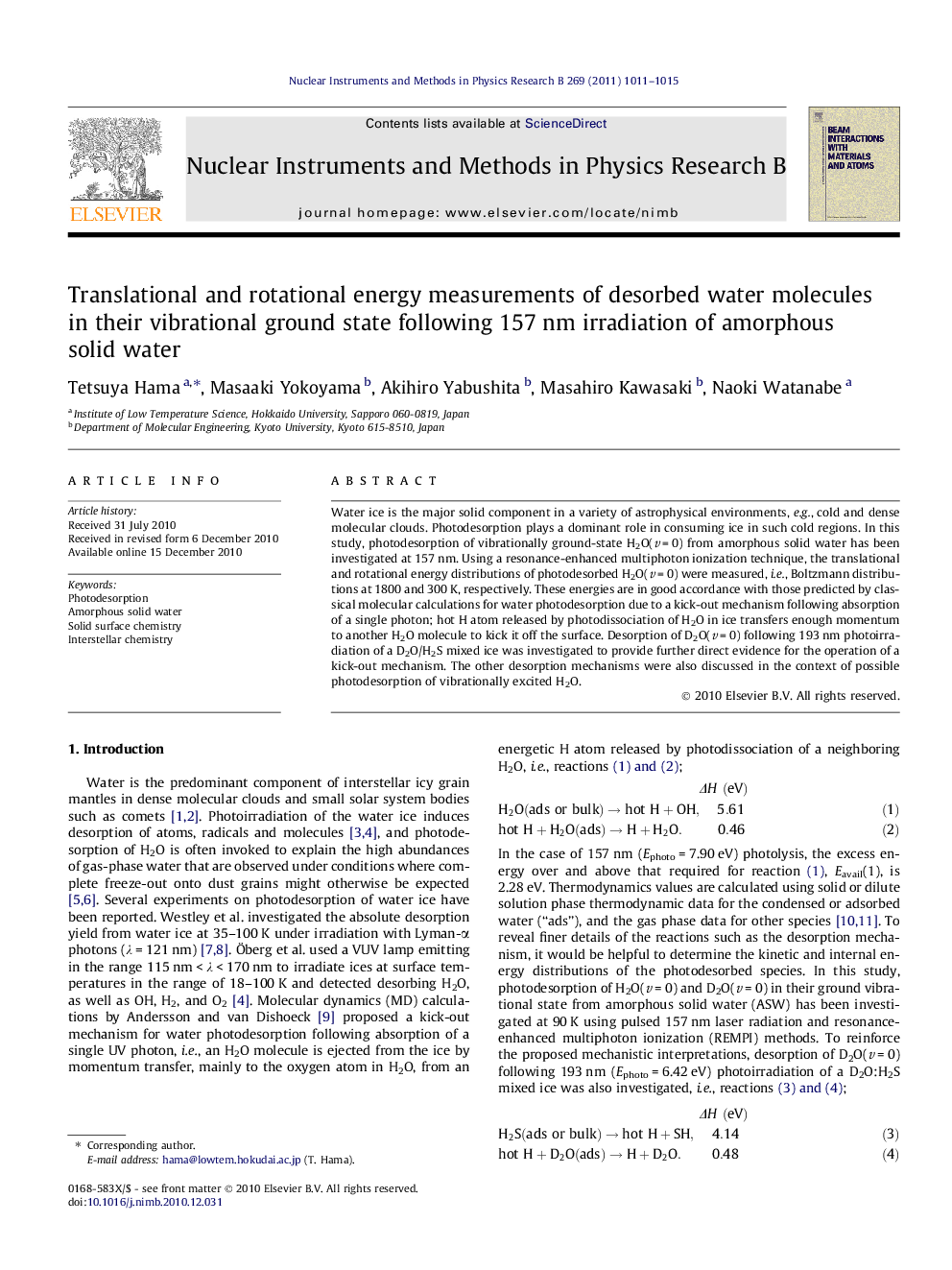| Article ID | Journal | Published Year | Pages | File Type |
|---|---|---|---|---|
| 1686225 | Nuclear Instruments and Methods in Physics Research Section B: Beam Interactions with Materials and Atoms | 2011 | 5 Pages |
Water ice is the major solid component in a variety of astrophysical environments, e.g., cold and dense molecular clouds. Photodesorption plays a dominant role in consuming ice in such cold regions. In this study, photodesorption of vibrationally ground-state H2O(v = 0) from amorphous solid water has been investigated at 157 nm. Using a resonance-enhanced multiphoton ionization technique, the translational and rotational energy distributions of photodesorbed H2O(v = 0) were measured, i.e., Boltzmann distributions at 1800 and 300 K, respectively. These energies are in good accordance with those predicted by classical molecular calculations for water photodesorption due to a kick-out mechanism following absorption of a single photon; hot H atom released by photodissociation of H2O in ice transfers enough momentum to another H2O molecule to kick it off the surface. Desorption of D2O(v = 0) following 193 nm photoirradiation of a D2O/H2S mixed ice was investigated to provide further direct evidence for the operation of a kick-out mechanism. The other desorption mechanisms were also discussed in the context of possible photodesorption of vibrationally excited H2O.
